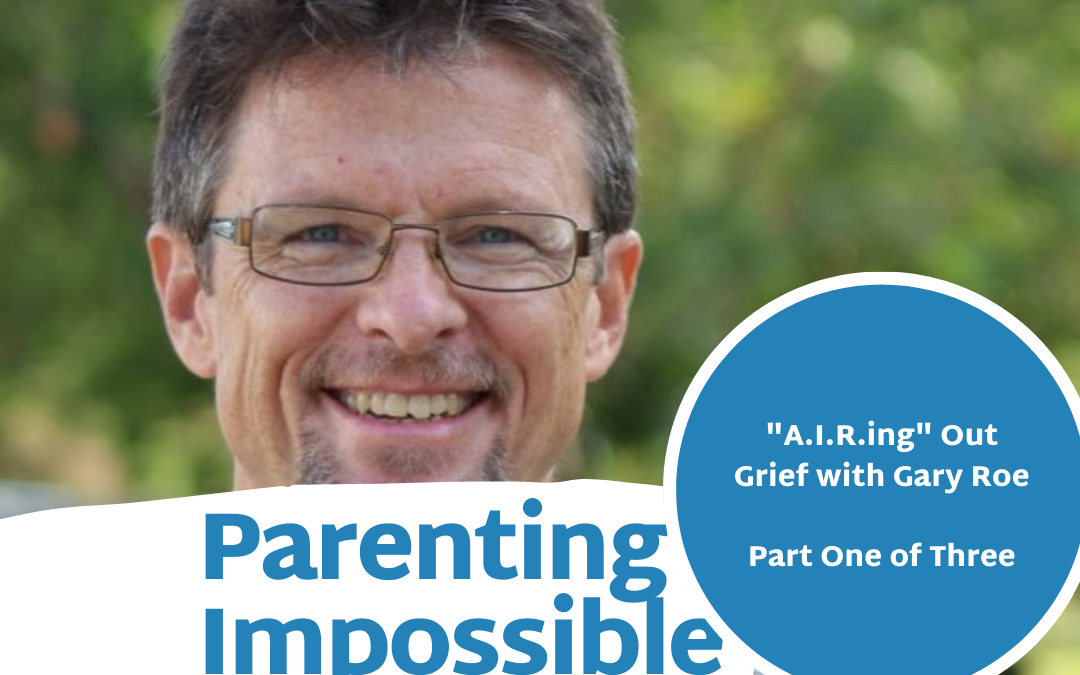When most people hear about what Gary Roe does for a living, he says, “They just shake their heads and say, how did you wind up there?” The answer to this question is that Gary had a troubled childhood riddled with grief that he transformed into a career path for good, thanks to help from many people who supported him during those trying years. After studying psychology and going to seminary, Gary currently serves as a hospice chaplain and grief counselor for Hospice Brazos Valley in central Texas.
From the ages of three to seven, Gary was sexually abused. This trauma was followed by the death of two grandfathers, a grandmother with dementia who could not remember him, and the death of a dear friend at the age of 12. A few years later, his mother began to show signs of a mental illness, and his father had a heart attack right in front of him. Gary was 15 years old when he and his brother made the decision to take their dad off of the ventilator. After all of this trauma and loss, Gary was given a second chance to have a family when another student at his school invited him to live with his family. Their acceptance of him changed his life.
Gary’s experience of grief and loss inspired him to support other people in their grief. He knows that there is no “magic pill” or perfect “prescription” that cures everyone’s grief. Gary notes, “You don’t graduate from this, you move forward.”
Not all grief involves mourning the loss of a person—you can mourn a financial loss, the loss of a job or a dream, and more. Life is a series of little “deaths” that we have to learn how to grieve in healthy ways. Rather than toughening up, “moving on,” sitting in pain, overeating, starving, and ignoring your pain, you have to face it one day at a time. The experience of grief is like being in a forest: you are surrounded by darkness and trees, and you only have enough light to see a few steps ahead of you.
There are three thoughts that every grieving person has:
- Am I alone?
- Am I crazy?
- Am I really going to get through this? And if I do, who am I going to be on the other side?
We may wish that grief came with instructions so that we could move past these questions quickly, but Gary has a simplified acronym to help people process their pain: A.I.R. it out. “A” stands for acknowledge, “I” stands for identify, and “R” stands for release. Once you acknowledge what is going on, you can identify how it is making you feel and release these feelings. This is a repeating process that lasts for as long as you need it to. Gary suggests that people release their feelings by talking to someone who loves you and who listens well. You can also write or create art or creative visualizations that will help you express yourself.
Your experience will be different from everyone else’s because you are unique. For Annette, her experience of grief “was like going through jello.” She was forgetful and exhausted, and part of her did not want to let go of the pain of losing her daughter, Elizabeth, to mitochondrial disease because the grief made her feel like a better mom.
Grief does not have an expiration date, and it is because we feel love that we feel grief. According to Gary, “All you can do in grief is to grieve.”
You can see more of Gary’s online resources on his website.
Annette Hines has been practicing in the areas of Special Needs, Elder Law, and Estate Planning for more than 20 years. Ms. Hines brings personal experience with special needs to her practice and podcasts as the mother of two daughters, one of whom passed away from Mitochondrial disease in November 2013. This deep, personal understanding of special needs fuels her passion for quality special needs planning and drives her dedication to help others within the special needs community.

